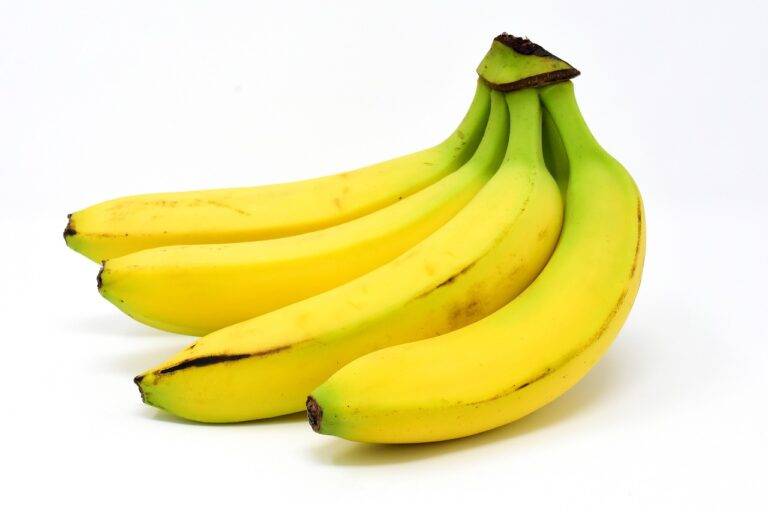Innovations in Eggshell Sanitization Methods
betbook247, radhe exchange registration, my laser247.com:Innovations in Eggshell Sanitization Methods
When it comes to food safety, sanitizing eggshells is a critical step in preventing the risk of foodborne illnesses. Contaminated eggs can harbor harmful bacteria such as Salmonella, which can lead to serious health issues if consumed. In recent years, there have been significant advancements in eggshell sanitization methods, with researchers and food companies alike exploring new technologies to ensure the safety of eggs for consumers.
In this blog post, we will explore some of the latest innovations in eggshell sanitization methods, from traditional washing techniques to cutting-edge technologies that promise to revolutionize the way we sanitize eggs.
Traditional Washing Techniques
One of the most common methods of sanitizing eggshells is by washing them with warm water and a mild detergent. This helps to remove dirt, debris, and potential contaminants from the surface of the eggshell. However, traditional washing methods may not be sufficient to eliminate all bacteria, especially if the eggs are heavily contaminated.
To enhance the efficacy of traditional washing techniques, some companies have begun implementing automated egg washing machines that use high-pressure water jets and brushes to thoroughly clean the eggshells. These machines are equipped with sensors that can detect any remaining dirt or contaminants, ensuring that the eggs are properly sanitized before being sent for packaging.
Ultraviolet (UV) Light Sanitization
UV light has long been used as a disinfectant in various industries, including healthcare and water treatment. In recent years, researchers have started exploring the use of UV light for sanitizing eggshells. UV light has been found to be effective in killing bacteria, viruses, and other microorganisms present on the surface of eggshells.
UV light sanitization systems typically consist of UV lamps that emit a specific wavelength of light known to be germicidal. When exposed to UV light, bacteria on the eggshell’s surface are inactivated, reducing the risk of contamination. Some companies have started incorporating UV light sanitization systems into their egg processing lines to enhance food safety and quality control.
Ozone Treatment
Ozone treatment is another innovative method that has gained popularity in the food industry for its strong disinfectant properties. Ozone is a powerful oxidizing agent that can effectively kill bacteria, viruses, and fungi on various surfaces, including eggshells. Ozone treatment works by infusing water with ozone gas and then using it to sanitize the eggshells.
Ozone treatment systems are designed to eliminate up to 99.9% of bacteria, ensuring that the eggs are safe for consumption. Ozone has the added benefit of being a chemical-free sanitization method, making it an eco-friendly alternative to traditional sanitizing agents.
Plasma Technology
Plasma technology is a cutting-edge innovation that shows great promise for sanitizing eggshells and other food products. Plasma is a state of matter in which gas molecules are ionized to create a highly reactive environment. This reactive environment can effectively kill bacteria and other pathogens on the surface of the eggshell.
Plasma technology systems are being developed to treat eggshells with low-temperature plasma, which can deactivate bacteria without affecting the quality of the eggs. This technology offers a fast and efficient sanitization method that can be easily integrated into existing egg processing lines.
Electrolyzed Water
Electrolyzed water is a novel sanitization method that has been gaining attention in the food industry for its effectiveness in killing bacteria and viruses. Electrolyzed water is produced by passing an electric current through a saltwater solution, resulting in the formation of hypochlorous acid, an antimicrobial agent.
Electrolyzed water systems are being used to sanitize eggshells by spraying them with hypochlorous acid. This method has been shown to reduce bacterial contamination on eggshells significantly, making it a valuable tool for enhancing food safety. Electrolyzed water is non-toxic and safe for human consumption, making it a preferred choice for sanitizing eggs.
Cold Plasma Technology
Cold plasma technology is a non-thermal sanitization method that utilizes plasma to kill bacteria and other pathogens on the surface of food products. Cold plasma is generated by applying an electric field to a gas, creating reactive species that can target and destroy bacteria without heating the food.
Cold plasma technology is being explored for sanitizing eggshells due to its high efficacy in killing a wide range of bacteria, including those that are resistant to traditional sanitization methods. This technology offers a fast and chemical-free way to sanitize eggs, ensuring their safety and quality.
Conclusion
Innovations in eggshell sanitization methods are continuously evolving, driven by the need to enhance food safety and quality. From traditional washing techniques to cutting-edge technologies like plasma and UV light sanitization, there are various options available to ensure that eggs are safe for consumption. Food companies are increasingly investing in advanced sanitization systems to meet stringent food safety standards and protect consumers from the risk of foodborne illnesses.
As research in eggshell sanitization continues to advance, we can expect to see more innovative methods being developed to ensure the safety and quality of eggs. By staying informed about the latest technologies and best practices in eggshell sanitization, we can all play a role in promoting food safety and reducing the risk of foodborne illnesses.
FAQs
Q: Are washed eggs safer than unwashed eggs?
A: Washing eggs can help remove dirt and debris from the surface, reducing the risk of contamination. However, washing alone may not be enough to eliminate all bacteria. Proper sanitization methods are essential to ensuring the safety of eggs.
Q: Can I sanitize eggs at home?
A: While it is possible to sanitize eggs at home using methods like washing with warm water and disinfectants, it is recommended to purchase eggs that have been properly sanitized by commercial producers to reduce the risk of contamination.
Q: How do I know if eggs have been properly sanitized?
A: Look for eggs that have been marked with a quality assurance seal or certification from a reputable food safety organization. These seals indicate that the eggs have undergone rigorous sanitization processes to ensure their safety and quality.







